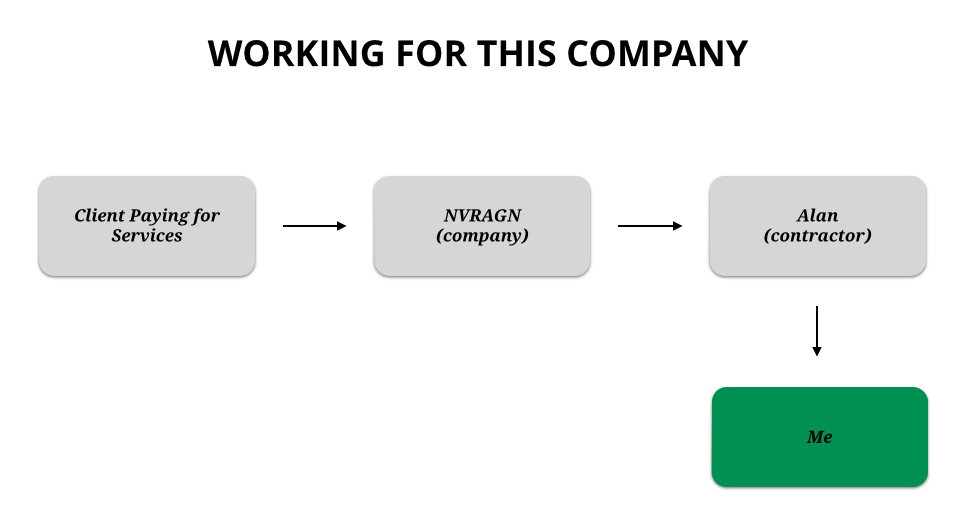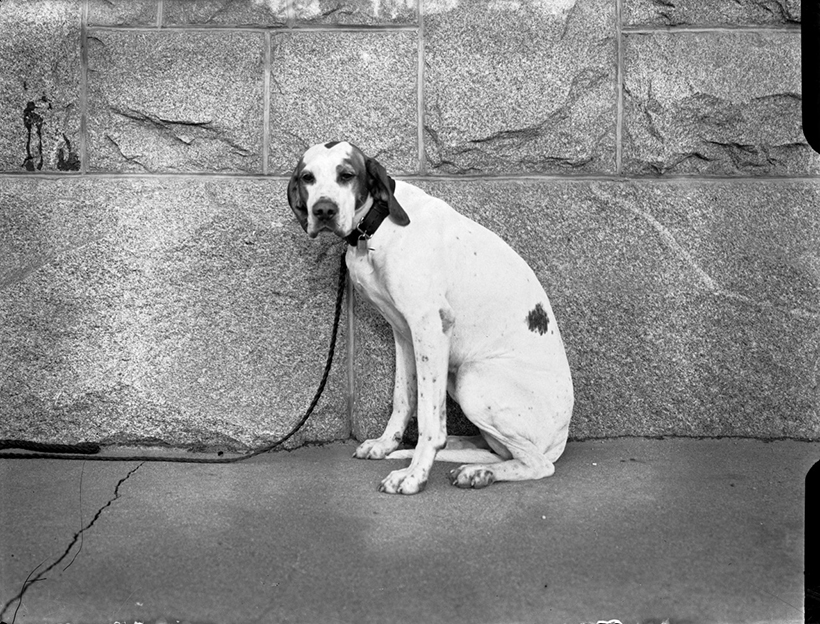Have you ever had a consulting, freelance or contract project that went sour?
I considered myself lucky to never have… That is, until recently.
Over these past few weeks I’ve been involved in a not-so-happy freelancing story. And I would like to share it with you.
Frequent readers of Learn to Code With Me know that I like to keep content on my site motivating, helpful and constructive.
Sure, I’ve taken online courses or purchased code-related software in the past I didn’t enjoy. And was even tempted to write about it. But I held back because I don’t want a site where negativity is brewing.
However, this is a story filled with lessons and many things I wish I did differently. And I would like to use my story as an example. An example of the warning signs, or red flags, you should look out for when dealing with clients.
As you’ll read below, if I took greater precautions before saying “yes” and was more aware, I could have avoided this situation sooner rather than later. And ultimately would have saved lots of time.
Hopefully you can use some of these warning signs so that you can avoid sour projects in your own life. Before diving in, I also want to add that all names have been changed for the story.
Freelance Starter Guide
Sign-up to get my ultimate guide for getting started as a freelancer.
1. Desperation and Unsubstantiated Urgency on Behalf of the Client
This story starts out different from most.
The company, which I’ll call NVRAGN, called me in stir. (The name of the actual company is an acronym… But the one I created is better.)
Alan, the guy who called, got my number from my boyfriend.
Alan got my boyfriend’s number from a friend he went to high school with. (Alan went to high school with, not my boyfriend.)
Confusing already, right?
Here’s the chain of communication:
NVRAGN –> Alan –> Alan’s Friend –> My Boyfriend –> Me
Alan called me in a stir. The company he works for needed a website built right away.
Why the urgency?

I am still not 100% certain. I know part of the reason was that their web designer had unexpectedly quit…for “personal reasons”.
All of this—urgency, a designer quitting—may have been true and justified given the situation they were in.
Nonetheless, there was this desperation. This urgency. And something about it didn’t feel right.
The Lesson to Takeaway
When a prospective client reaches out in a stir, take a moment and pause. Assess the situation from multiple angles. Be wary.
Find out why they are contacting you and the reasons for it.
Looking back, this disorganized and scattered first point of communication foreshadowed what was to come.
2. The Client is a “Friend of a Friend of a Friend”
There is nothing inherently wrong with doing work for a friend of a friend of a friend.
But part of the reason I wasn’t immediately thrown off was because Alan and I had a personal connection.
He went to high school with someone my boyfriend knows. As I think about it now, it is ridiculous that this distant connection made me feel like it was “okay”. And that I could trust him.
The Lesson to Takeaway
Unless you really know the person, worked together before, or it’s your blood relative—don’t be so trusting.
Just because you share a personal connection doesn’t mean they won’t screw you over.
3. The Client Dodges a Contract
“There is just so much urgency to start this project, who has time for a contract?!”
Nonsense. There’s always time for a contract. Looking back now, I should have taken initiative and sent my own contract over.
However, when working with companies in the past, I was always the one signing their contract, their nondisclosure agreement and they sent me a W9 form to fill out.
After requesting a contract on NVGAGN’s behalf, or suggesting I send my own, I received answers from Alan like, “Oh yeah, I’ll look into that,” or “Let me ask around.” The same thing goes with the W9 form.
While I mentioned these points to Alan on a few occasions, I was not persistent enough. And that was a huge mistake on my end.
Moreover, NVRAGN/Alan were quick to send me 50% of the total project price we initially agreed upon. That got me to shut up.
I thought to myself,
“Well, they sent money before starting—without even having to ask. They must be serious about finishing this project.”
Looking back, that’s not a good line of logic. And as it turns out, I ended up working over the initial agreed upon amount of hours. Sure, they said they would pay for extra time put in. But none of this was in “official” writing.
To this day, I haven’t been paid for the whole project, let alone extra hours put in. And it’s safe to assume I will most likely never see any of this money.
There was never a formal contract, after all.
The Lesson to Takeaway
Almost always, sign a contract.
The exceptions are:
- If it’s for a close family member (like your mom) or
- If the project is so small that the time creating a contract isn’t worth it.
For example, in the past (and still sometimes today) I would help people edit their writing. Sometimes it’d be a small assignment, so I’d only charge $50 – $100.
In those instances, I never use a contract. Because working on something for an hour really isn’t a huge investment of time. Worst case scenario: they don’t pay me.
If that were to happen (which it hasn’t…yet) I simply would never work for them again.
But for big projects, that take many hours? Yes. Contract it up.
4. Not Working Directly with the Paying Client
From early on I knew I would be doing work for one of NVRAGN’s clients. Essentially, Alan and this company were acting middlemen.
While their company is in the online space (like every company nowadays), they focus on financial services. And part of the packages they offer their clients include website design / development.
Let me make this clear: I’ve done plenty of work in the past for companies as a contractor, working for their clients.

But I wasn’t a contractor in this scenario: at least not legally. Remember? Since there was no contract.
Moreover, in the past when I’ve this, it was always for a larger company. A company that had multiple employees. A company with a lot more on line. And, typically, companies working with multiple contractors at any given time.
Basically: a company that couldn’t just screw over a contractor, because it would bite them in the butt.
For instance, when I did copywriting, the larger digital agency I wrote for had about 40 copywriter contractors alone. That doesn’t even include their web designers / developers. Needless to say, they were very familiar with the processes of hiring and keeping contractors.
Later, much later, I found out that Alan was technically a contractor, too. All the while I thought he was one of the companies cofounders or in the least a full time employee.

The Lesson to Takeaway
Step back and take a big picture view. And if you’re some ambiguous end person—that’s a red flag.
As a general rule of thumb: the less people involved in the payment chain, the better. Meaning a direct line of communication with the person paying for the services is ideal.
However, also take into consideration the size of the company you are working for. Larger companies, with a solid reputation and experience working with contractors, will less likely screw you over. In fact, hardly ever I would argue.
The point is: when you’re working directly with the client, there’s a lesser chance things will turn complicated.
5. Not Having all the Assets in the Beginning
When I say “assets”, I mean site components like homepage copy, information for the contact page, images for the site and so forth.
Like other warning signs on the list, this depends on the given situation.
I’ve worked as a contractor before where I certainly had no assets at the start of the project. However, whenever this was the case, I was always dealing with a larger, more established company.
In this particular scenario, with Alan and NVRAGN, much of the lag derived from a back and forth between them and the client (the one paying for the website to be done).
I was basically uninvolved in all of this back and forth. Instead, I heard through the grapevine that the client was slacking on providing the needed assets.
The Lesson to Takeaway
The more assets (images, page content, color schemes, etc.) you receive from the start, the better. This is especially true when working with an individual or smaller, less-established companies.
Take into consideration other aspects of the project and who you are working for.
Ask yourself questions like:
- Is this for a larger company, with experience working with contractors in the past?
- Is there a clear line of communication between me and whoever I report to?
- Is there a contract?
Moving forward I will most likely not start another project again for a smaller clients unless I get a majority of the assets upfront. (Or they pay extra so I can find/create them myself.)
In this NVRAGN situation, I should never have begun work, or continued working, until more assets were handed over.
6. The Project Goes Way Over the Initial Agreed Upon Timeline
Don’t get me wrong: I’ve worked on projects where things went beyond the initial agreed upon timeline.
It’s especially hard to gauge things like a timeline as a newcomer. It’s difficult to anticipate potential problems that may arise: communication lag, unexpected changes and so forth.
But in this situation, nothing was held up because of me. And I kid you not: this few week “small project” started turning into a few month debacle.
The Lesson to Takeaway
Projects can fall behind. That’s not a reason in itself to run away.
But when things slow down—and it’s not because of anything you are doing—stop working until you don’t have a clear idea of what is going on.

As I write this today, I am shaking my head. I cannot believe I kept working even though I did not have a clear idea of the final expected outcome.
7. There is No Clear Project Outline
With Alan and NVRAGN, there was never a clear project outline.
There was no:
- Timeline
- Milestones
- List of what had to get done and by whom
You may be thinking, “Well, why didn’t you make your own outline?”
My answer: that wasn’t what I was getting paid to do. With this project, I was simply supposed to carry out tasks—not call the shots.
And for a detail-oriented, highly organized person like myself—not having some outline or agenda to follow is basically a nightmare.
The Lesson to Takeaway
The more straightforward the project outline is from the beginning, the better.
Sure, it’s subject to change.
However, signs of organization coming from the client/company early on means more legitimacy. At least the client/company is planning ahead and thinking about execution.
Even more, a clear project outline shows that they (client/company) respect you and your time.
Ultimately, an outline is beneficial for all parties involved.
8. There’s a Total Lack of Communication
Not only was there a lack of communication between me and Alan—there was also broken communication between Alan and the end client. And perhaps even between Alan and NVRGAGN.
Communication issues in working environments occur all the time.
But when you’re communicating through layers of people, without a clear project outline, it becomes even more awry.
The Lesson to Takeaway
Make sure there is a clear path of communication before starting a project.
- Know who you’ll be reporting to
- Know the preferred method of communication (Slack, Google Chat, Email, etc.)
- Understand what is expected in terms of frequency: Report once a day? Once a week?
- Even establish protocol of what will happen if communication starts to fall by the wayside—i.e., if you don’t hear from X person in X days, contact X (boss of person not responding)
9. Negativity From Others Working on the Project
Fortunately my main point of contact for this project, Alan, was a good-hearted person. He was amicable.
But there was another person who worked on the project—a more experienced programmer—who was disagreeable. (Thank goodness this gentleman and I only had to communicate occasionally.)
This person would say condescending things like, “This is really easy, why don’t you get it?” when the task was actually not that easy. (Either way, you don’t say that to people.)
Or say that what I am in interested in (as far as web design/development goes) was “dumb”. And then attempt to steer me otherwise.
The Lesson to Takeaway
When people you work with give unnecessary attitude or just have a negative presence—that’s a red flag.
And a sign of a toxic work environment. (Even if you are working remotely—people can still be negative via Slack, Email or Google Chat. Maybe even more so than in person.)
In my opinion, nothing is worse in a work environment than a negative attitude. These unpleasant interactions should have been a sign for me leave sooner than I did.
And if you ever find yourself in a similar situation: never let the words or opinion from a random person get you down or make you reconsider what you are doing with your life.
It’s one thing for your mentor, mother, best friend or significant other to give a recommendation. It’s another thing when a random workmate or professional acquaintance tries to offer unrequested advice.
Hit the snooze button. And don’t take it personally.
10. Working in a Constant State of Confusion
Sure, we all get confused sometimes.
There’s moments when we’re unclear of what’s expected, or uncertain of the exact deliverables. But if you’re working in a constant state of confusion, that’s not good.
For instance if you’re,
- Unsure of what the project status is
- Uncertain of what you’re supposed to do next
- Or unclear on who you have to communicate with to get X
Freelance Starter Guide
Sign-up to get my ultimate guide for getting started as a freelancer.
The Lesson to Takeaway
Don’t start a project if you’re confused. That is not a good way to get the ball running.
Moreover, if aspects of the project are confusing in the beginning, it will probably only going to get worse as time passes.
And don’t make the mistake I did, where I kept working despite being confused.
Conclusion
When taken individually, none of the above warning signs should be an automatic deal breaker.
However, when combined, it can be a recipe for disaster.
A few key takeaways:
- Sign a contract almost always (there’s always a few exceptions to every rule)
- Avoid working with a middleman (unless it’s for a more established company)
- No project timeline and poor communication early on is a bad sign
- If there’s a toxic work environment, online or in person, evacuate
In the end, realize that sometimes you have to say “no”. (Even if you’re just starting out.)
And that’s okay. When you say “no” to one project, you allow room for bigger and better things.
Now It’s Your Turn
It’s one thing to read these warning signs, it’s another thing to apply them to real life.
Next time you’re about to sign on to a new project, look out for these warning signs.
Do you have any other warning signs to add that I forgot to mention? Please share them below!

